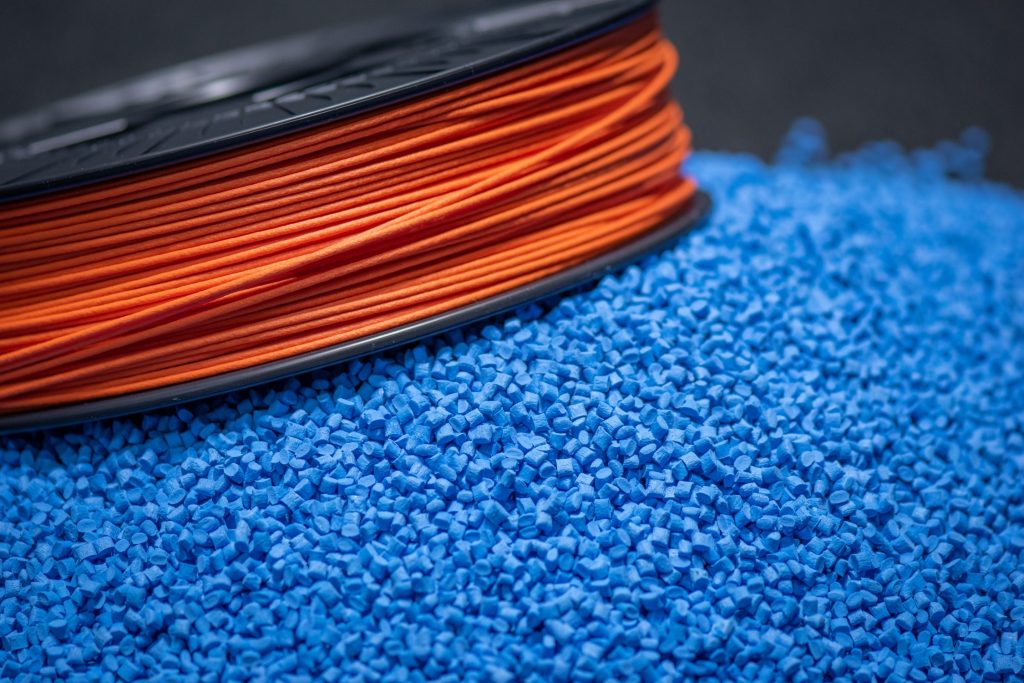Global automotive manufacturer BMW Group is advancing its circular economy goals by repurposing waste from its additive manufacturing processes. At the Additive Manufacturing Campus in Oberschleißheim, Germany, and other sites worldwide, used 3D printing powder and components are recycled into filament for the Fused Filament Fabrication (FFF) process and granulate for Fused Granulate Fabrication (FGF), enabling the creation of new tools and parts.
“I’ve been involved with this project from the very beginning and I’m thrilled to see how far we’ve come – from our initial ideas and attempts at startup level to now being able to produce large quantities of highly robust components from recycled filament at any BMW Group production location. The use of waste powder and discarded 3D printing components is a key element of a functional and efficient circular economy,” says Paul Victor Osswald, project manager for Predevelopment Non-Metals.

Origins and Development
The initiative began in 2018 with the “bottleUP” project, part of BMW’s Startup Accelerator program, initially focusing on converting recycled PET bottles into 3D printing materials. By 2019, efforts shifted to repurposing internal industrial waste to create recycled filament. The first functional components printed from this filament—such as holders and production aids—were produced by 2021. Currently, the Campus in Oberschleißheim processes up to 12 tonnes of waste powder annually into filament and granulate, which are then utilized to manufacture tools that improve operational efficiency, reduce costs, and enhance workplace ergonomics.
To ensure consistent quality across facilities, the Additive Manufacturing Campus provides comprehensive support, including recycled materials supply, validated printing parameters, and printer recommendations. This standardized approach enables plants to adopt 3D printing quickly and effectively. Additionally, the Campus offers extensive training programs covering basic and advanced additive manufacturing techniques. This fosters a collaborative knowledge network among BMW plants, with the next 3D printing facility at the Debrecen plant in Hungary set to benefit from this expertise.

Production Benefits and Success Stories
BMW’s decentralized 3D printing network enables rapid in-house production of components, often delivering parts within hours. This agility reduces downtime and encourages innovation at the production floor level.
At the BMW Group’s Munich plant, a 3D printed component is now used during the chassis-to-body assembly process. This part temporarily holds the steering rod in a precise position, guiding it safely through the body opening and preventing any collisions. The reusable piece is installed just before assembly and removed afterward.

Meanwhile, at the BMW Motorrad facility in Berlin, 3D printed support pedestals assist in applying decorative elements to motorcycle trim panels. These pedestals are custom-designed to fit the panels exactly and include locking features to securely hold the parts in place, preventing any movement during decoration.
At the Dingolfing plant, located in Germany, workers created their own 3D printed fitting aids to stop screws from getting lost during vehicle assembly. They developed a magnetic screw holder that attaches to cordless screwdrivers, allowing screws to be carried safely and conveniently.
Recycling Efforts in Additive Manufacturing
Beyond the BMW Group’s initiatives, significant progress is being made across the additive manufacturing industry to promote sustainability and material recycling. In February, America Makes, and the National Center for Defense Manufacturing and Machining announced the winners of a $2.1 million funding round, covering six key research areas. Among these, ASTM International, a global standards organization, will lead a $600K project on Analysis of AM Sustainability and Environmental Benefits.
This project will focus on developing methodologies for reutilizing and recycling AM materials. It will explore strategies for material recovery, lifecycle assessments, and frameworks to help manufacturers adopt eco-friendly practices without compromising part performance or reliability. The research will build on ASTM’s expertise in AM standards, qualification, certification, and sustainability, ensuring that the findings contribute to industry-wide best practices and regulatory guidelines.
In 2024, AMAZEMET, a Warsaw-based company, unveiled its Powder2Powder (P2P) atomization system at Formnext 2024. This system offers a versatile solution for recycling metal powders and producing custom pre-alloy powders directly from existing powder feedstock, marking a key advancement in sustainable metal powder production for the 3D printing industry.
What 3D printing trends should you watch out for in 2025?
How is the future of 3D printing shaping up?
To stay up to date with the latest 3D printing news, don’t forget to subscribe to the 3D Printing Industry newsletter or follow us on Twitter, or like our page on Facebook.
While you’re here, why not subscribe to our Youtube channel? Featuring discussion, debriefs, video shorts, and webinar replays.
Featured image shows Worker printing with recycled 3D printing waste. Photo via BMW.
